17 Apr Progressive Education Can Increase Student Engagement and Success, Experts Say

Dr. Shalonda Gregory, principal of MetWest High School in Oakland, is leading a new form of education not seen at other local schools. (Screenshot captured by Joe Porrello / The CC Pulse)
The Carnegie Unit has been used as a blueprint from kindergarten to graduate school since 1906 to determine the length and number of school days and periods, courses offered, graduation requirements, admissions criteria and financial aid recipients.
But educators around the country are progressively beginning to reimagine the average academic journey — and are being backed by both sides of the political aisle.
Education experts spoke about some of the changes already taking place and potential modifications to come during an American Community Media (formerly Ethnic Media Services) press teleconference on April 4.
Louis Freedberg, a former journalist and editor of EdSource, spoke about why there is a need for such changes in how students learn and what can specifically be done to improve the situation.
“We’ve actually seen chronic absentee rates reach record levels,” he said. “Keeping kids engaged in school is a huge challenge — it presents a crisis for all forms of education.”
Even the creator of the Carnegie Unit — the Carnegie Foundation for the Advancement of Teaching based in Menlo Park — now wants to do away with its own brainchild.
“For decades, we’ve known that a time-based system of education is at odds with our educational aspirations. As a result, there has been no shortage of efforts to shift toward competency- and mastery-based frameworks that could erode the impact of seat time,” says CFAT President Timothy Knowles on the organization’s website.
New developments in ways to move learning out of the classroom, along with managing and grading skills sought after by employers like critical thinking, collaboration, persistence and independence are being adopted across the country, according to Freedberg.
And the changes are unlikely to decline any time soon, as President Donald Trump slowly takes apart the U.S. Department of Education.
“The Department of Education has been more or less missing in action… this movement can still go on regardless of what’s happening at the federal level,” Freedberg said. It’s up to state and local leaders, along with teachers, to propose and initiate the changes.
Freedberg also spoke to educational advancement overseas.
“There are many other countries around the world that are further ahead than the United States; certainly in Europe, the whole apprenticeship system is totally integrated into the school system so that the students leave high school on a pathway,” he said.
Dr. Shalonda Gregory, an educator of over 20 years, echoed his sentiment.
“Young people at this period in their lives are the most creative. Their brains are continuing to develop; they can contribute in so many ways,” she said. “In our country, we think a lot less of what a 16-year-old can do than we do in other countries.”
As principal of MetWest High School in Oakland — which began in the basement of Laney College 23 years ago — Gregory says her goal is to normalize joy in school to propel the future success of her students.
“It’s about being connected to the things they’re interested in — specifically their passions, even their cultural background,” she said. “It’s really important as educators that we meet students where they are; everyone is coming to us with different experiences.”
MetWest High, as Gregory put it, sets up students to not only chase their dreams — but catch them.
Each student creates an individual learning plan upon entering and sets goals for their career as well as who they want to be as a person. Using the Big Picture Learning Model, MetWest students engage in internships with mentors twice a week and are never in the classroom on consecutive days.
As an example, Gregory highlighted one senior who interned at a skateboard shop — where he now has a job waiting for him upon graduation — and a mechanic shop, where he learned the skills he currently uses to fix cars as a side job.
Though, the potential for similar hands-on learning goes beyond the educational realm and, according to Gregory, “requires just a deeper engagement of our country’s employers; who’s providing these opportunities for our young people?”
Whereas typical high schools have about five industry pathways for students, Met West’s small enrollment enables it to provide 20 different avenues. Even in core courses such as math and English, the curriculum is tailored to relate to the career aspirations of young learners.
As of now, MetWest High is the only school in the Oakland or West Contra Costa unified school districts using a Big Picture Learning Model — and many parents are not aware of the option.
“There are a lot of families that don’t even know we exist,” said Gregory.
But MetWest is not completely alone in using the Big Picture Learning Model. According to Gregory, about 100 schools throughout the U.S. use the curriculum.
Part of that model blends with that of the Linked Learning Alliance, which also tries to make courses more relevant and better ready students for their career and life. To go along with invaluable work experience, both Big Picture Learning and Linked Learning students graduate with a standard high school diploma and sometimes an associate degree.
More widely used, LLA is implemented in 80 California school districts, serving about 400,000 students at 250 schools. Some in WCCUSD include Pinole Valley Law Academy, Hercules Hospitality and Tourism Academy, De Anza IT Academy and Richmond High Law Academy.
Anne Stanton, the LLA president, is helping high school graduates to not “get to the end of the game undereducated and underemployable.”
She says such structural strides must be taken and not given.
“Superintendents turn over every two years in school districts often — so who owns this vision?” Stanton said. “If it’s owned by families… communities… employers — you can’t break it down.”
But such visions coming to fruition will not be easy; as Freedberg said, the Carnegie Unit system is probably more convenient.
“Changing anything is hard — particularly something that’s so entrenched in the American education system,” he said. “Once you add flexibility and students out on more internships, and you have interdisciplinary projects and classes that stretch more periods, it’s going to take more time to do that; the evidence is that the payoff is significant.”
According to an SRI International evaluation, Linked Learning students accumulated 8.9 more credits by the end of high school, were 2.1 percentage points less likely to drop out, and were 3.1 percentage points more likely to graduate; African American students earned 15.2 more credits in high school, and English learners were 2.8 percentage points less likely to drop out and earned an average of 11.7 more credits.
The good news, says Freedberg, is that schools are implementing the Big Picture and Linked Learning Alliance models at an accelerated pace.






No Comments